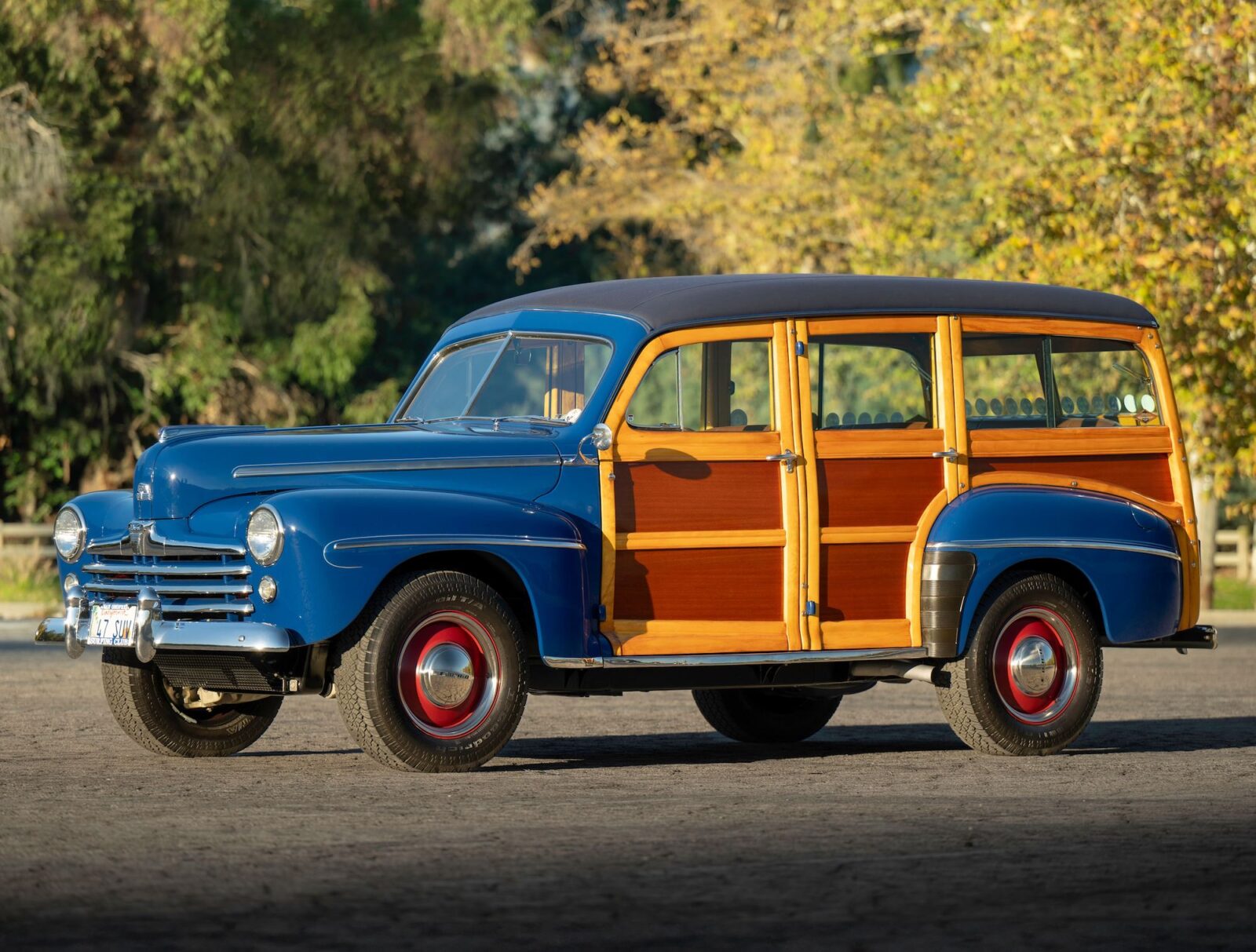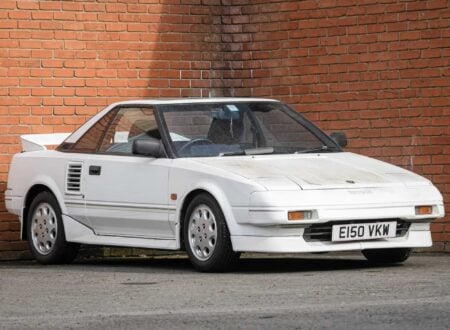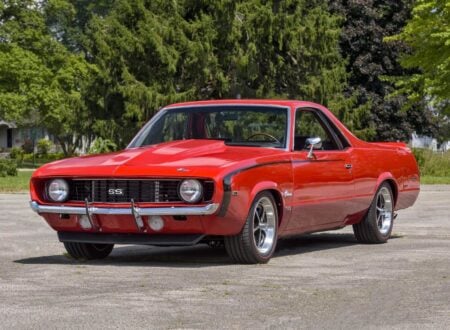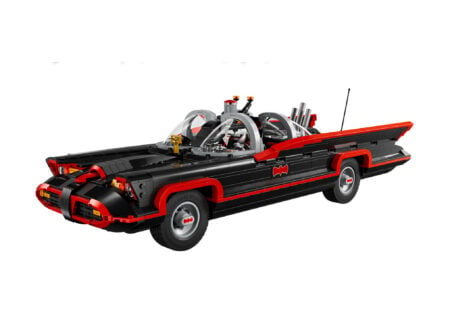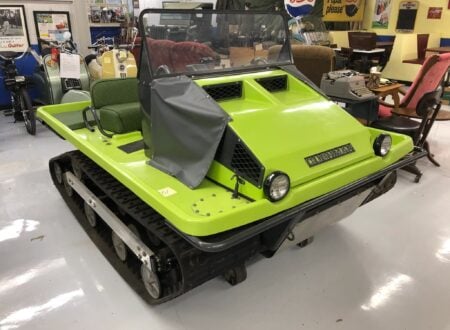Known as “The Woodyator,” this vehicle is the only one of its kind in the world. It’s actually two vehicles in one, an original 1947 Ford “Woodie Wagon” body fitted to the chassis and drivetrain of a 2003 Lincoln Aviator.
This vehicle was painstakingly built over a period of three years by the current owner (and now seller) as well as woodie master Ron Heiden, and Nick Kovacevich and Bill Cooke. It’s powered by the 302 bhp, 4.6 liter Ford DOHC 32 valve V8, and it retains the full 4×4 drivetrain.
Fast Facts – The 1947 Ford Super De Luxe “Woodyator”
- The history of the Woodie Wagon is inextricably tied to the earlier history of wooden horse-drawn carts and carriages – in fact many of the same joinery skills used to build carriages were implemented in Woodie Wagon construction.
- The first mass-produced Woodie Wagons began to appear in the 1920s, though wood-bodied cars had existed in some form or another since the earliest days of the automobile. Woodie Wagons used wood as a primary part of the automobile body’s structure, commonly the side frames and doors, sometimes the rear end as well.
- Later in the 1960s, 1970s, and beyond the faux Woodie Wagon would appear, cars designed to look like their earlier counterparts but now with wood (or simulated woodgrain vinyl) glued to the side of a steel car body.
- The vehicle you see here has been nicknamed the “The Woodyator,” it’s a restored 1947 Ford “Woodie” wagon body fitted to the chassis and drivetrain of a 2003 Lincoln Aviator. It’s been called “one of the best engineered and thoughtfully considered custom Woodies ever created.”
The Ford Super De Luxe Station Wagon
The Ford Super De Luxe was the top-of-the-line offering sitting above the Ford Special and Ford De Luxe that debuted in 1941, right as the United States was about to join World War II due to the attack on Pearl Harbor that same year.
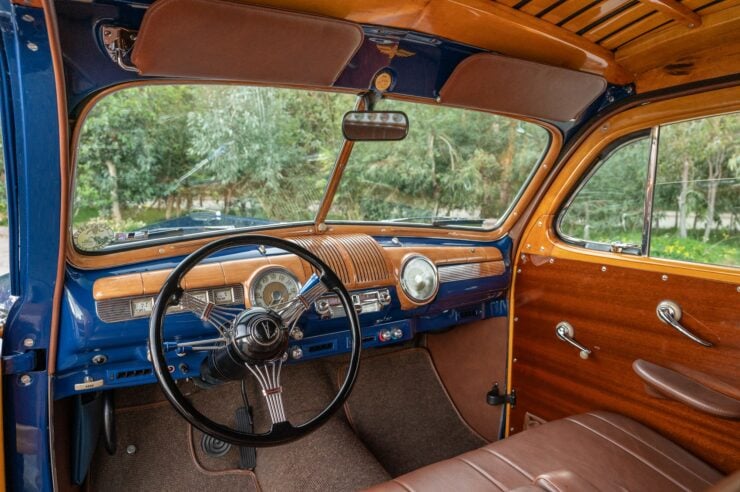

Production of Ford’s automobiles, and all civilian automobiles in the United States, would be interrupted by the war, only restarting en masse after hostilities ceased with the Japanese surrender in 1945. As with many automakers, Ford’s post-WWII model offerings were essentially the same cars that had been in production before the war, with some very hasty (and minor) changes.
As a result of this, the 1941 Ford and the 1946 Ford were largely identical, and the model range would remain much the same until the all-new 1949 Ford was ready a few years hence.
Despite the relative lack of modernity, this generation of inter-war Fords would become pop culture icons – in the 1985 film Back to the Future and the sequel Back to the Future Part II, Biff Tannen’s car was a black 1946 Ford Super De Luxe convertible.
This wasn’t the model series only claim to fame, a 1948 Ford Deluxe convertible was the car converted into “Greased Lightnin‘” in the 1978 musical romantic comedy film Grease.
Six years later in the 1984 film The Karate Kid, Mr Miyagi gave Daniel Larusso a cream-colored 1947 Ford Super DeLuxe convertible. Interestingly, this car was actually a gift to Ralph Macchio from the film’s producer, and Macchio still owns it to the current day.
This series of Fords would include two-door coupes, four-door sedans, two-door convertibles, and four-door station wagons. Some of these station wagons would be offered with “Woodie Wagon” bodies – the sides were constructed of maple and birch framing with mahogany paneling.
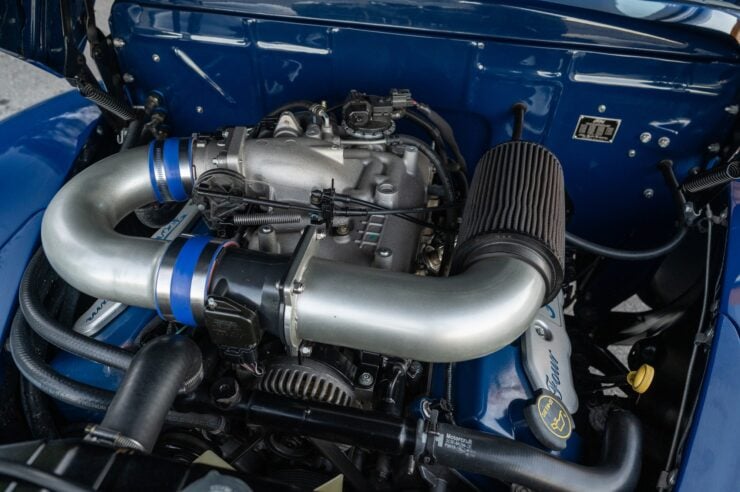

Years later in the 1950s and into the 1960s these Woodie Wagons would be available for not a lot of money as secondhand cars. They became almost the de facto choice for California’s surfers who lashed their surfboards to the roof and slept in the back, living an endless summer as they migrated along the coast searching for the perfect break.
“The Woodyator” – A Ford Super De Luxe x Lincoln Aviator
The project to build the “Woodyator” rose from the memories of the current owners early life in the 1960s as a young man, driving his original 1947 Ford Super Deluxe Station Wagon with friends on surf trips.
He decided to create a new version of the car of his youth, but a new version that benefited from the decades of advancements that have been made in the intervening decades. He acquired a 2003 Lincoln Aviator with just 811 miles on the odometer and a 1947 Ford Super Deluxe Woodie Wagon.
The Ford was sent off to premier woodie master Ron Heiden who restored the bodywork, the vehicle still retains almost all of its original maple and mahogany wood structure. The Lincoln was sent to experts Nick Kovacevich and Bill Cooke who modified the chassis to work with the Ford body.
A key criteria for this project was to keep the vehicle looking as close to original as possible, so it rides on period correct wheels and hub caps, and externally it looks much like a standard 1947 Ford Super Deluxe Station Wagon, though obviously with a little additional ground clearance.
The car is powered by the Lincoln Aviator drivetrain, headed up with the 4.6 liter Modular Ford V8, a double overhead cam, 32-valve version of the engine producing 302 bhp. Versions of this engine were also fitted to the Mustang Mach 1 and Mercury Marauder.
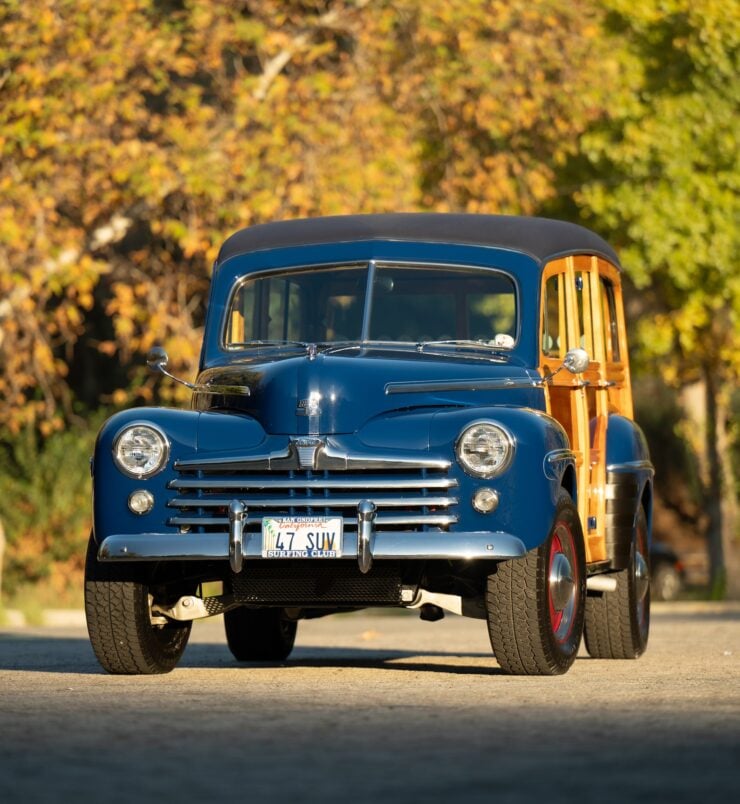

Power is sent back through a 5-speed automatic transmission to all four wheels, and the vehicle retains its original suspension and braking systems – giving it entirely modern driving characteristics – including the air-conditioning, heating, power steering, and power brakes.
The “Woodyator” is now being offered for sale by RM Sotheby’s as part of their Arizona Auction in late January. It has a price guide of $200,000 – $250,000 USD, far less than the cost to build another example. If you’d like to read more or register to bid you can visit the listing here.
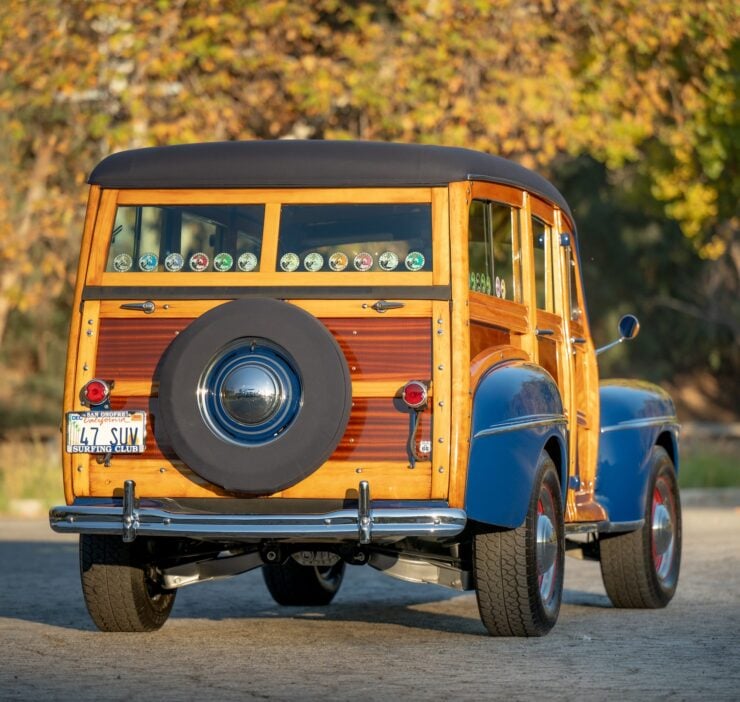
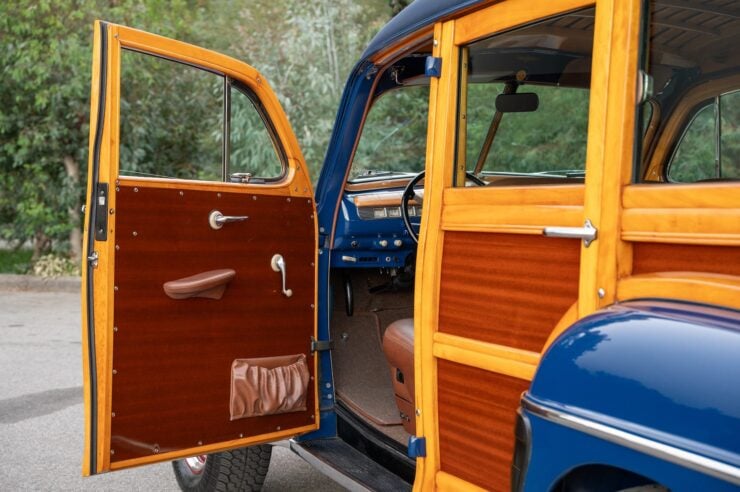
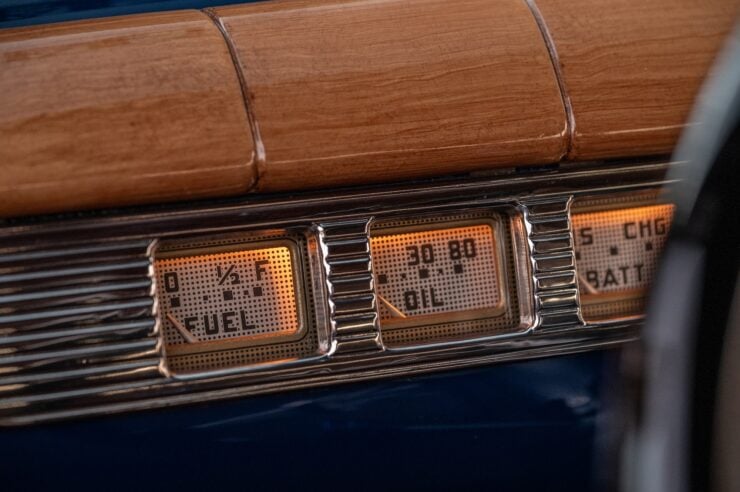
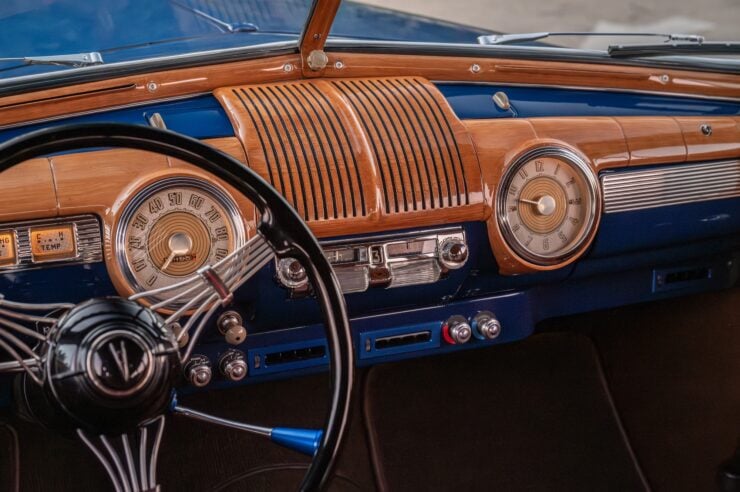
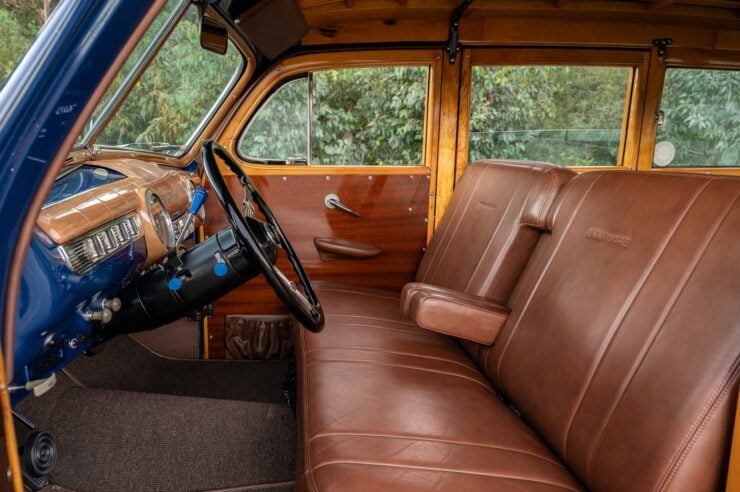
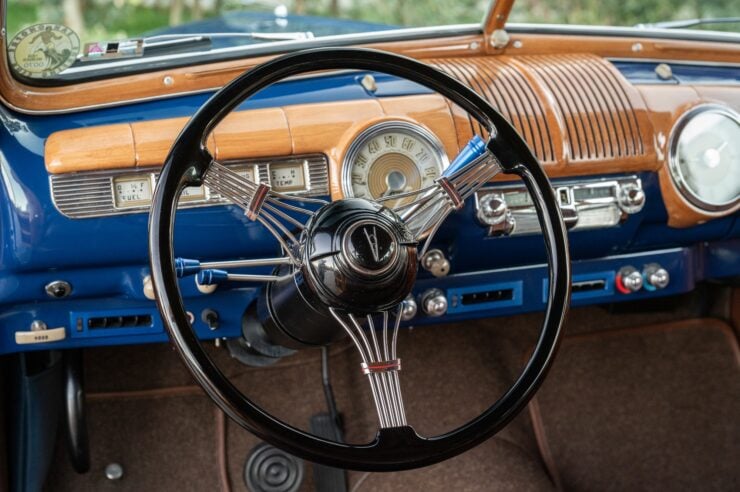
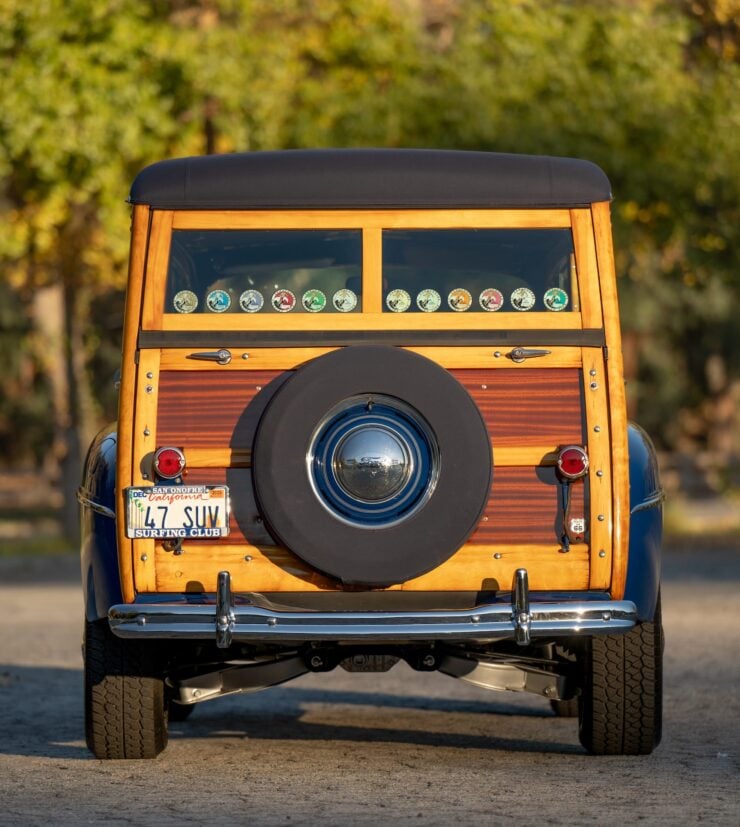
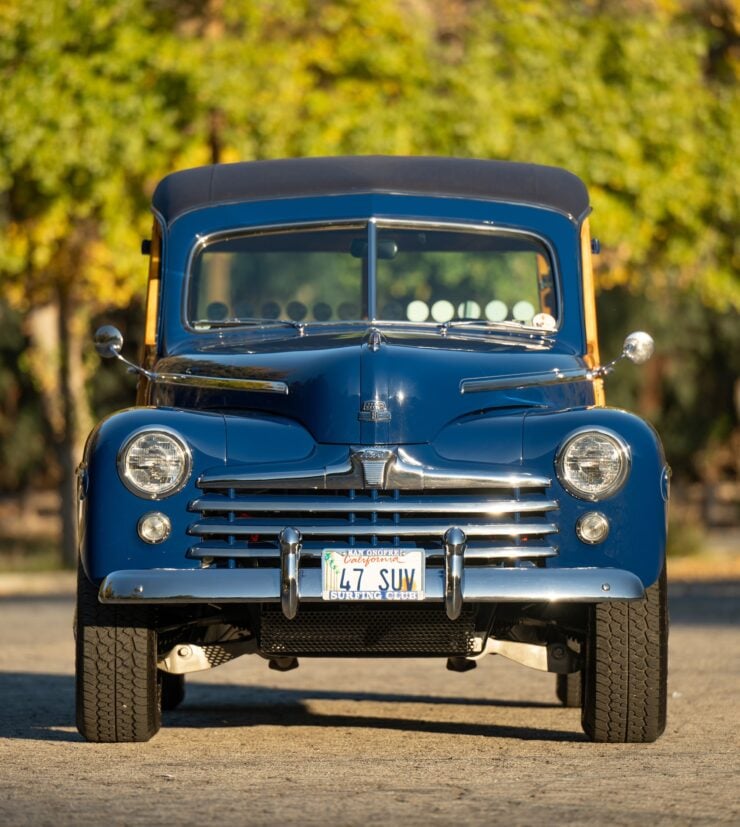

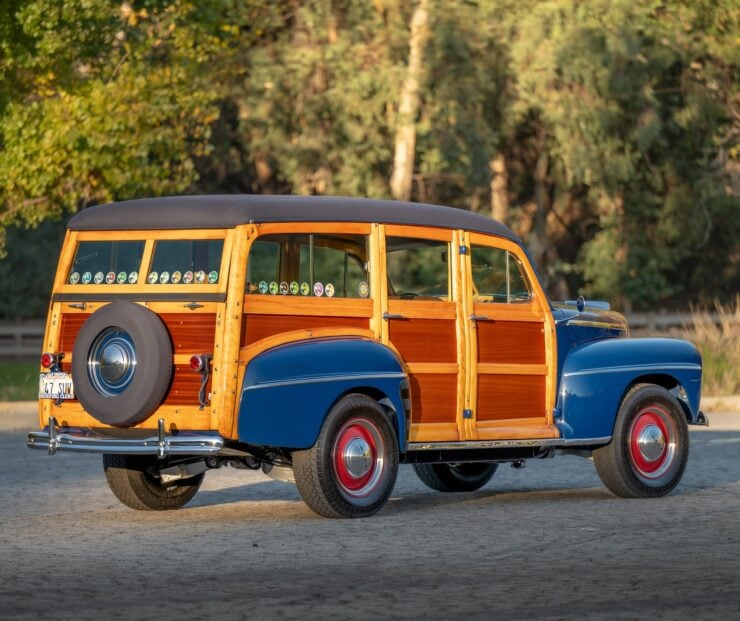
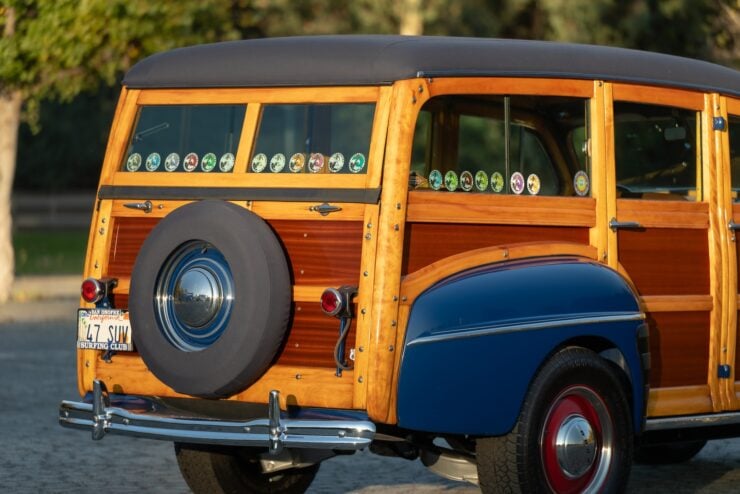
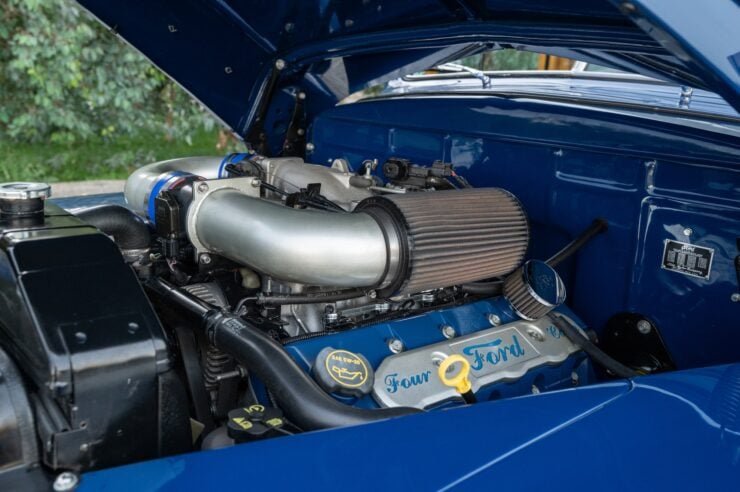
Images: Robin Adams ©2023 Courtesy of RM Sotheby’s

